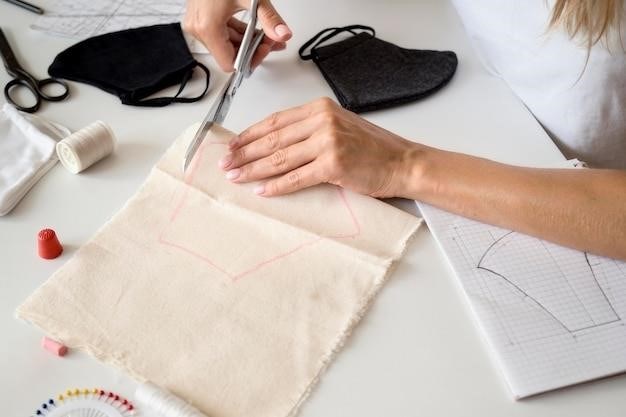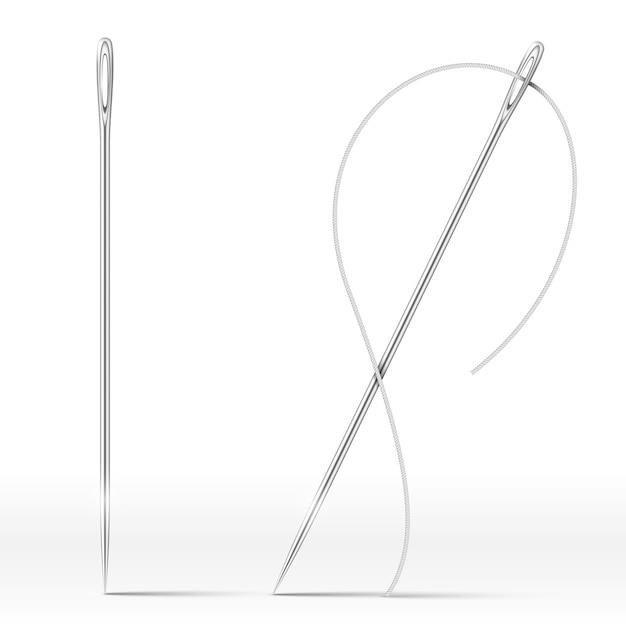Needlepoint Stitch Guide⁚ An Overview
This guide explores fundamental and advanced needlepoint stitches, offering detailed instructions and visual aids. Learn to select appropriate stitches for various designs and fabrics, achieving desired textures and visual effects.
Basic Needlepoint Stitches
The foundation of any needlepoint project lies in mastering basic stitches. The most fundamental is the tent stitch, a diagonal stitch covering one canvas intersection. This versatile stitch forms the basis for many others. Variations include the continental stitch, worked from bottom left to top right, creating neat, even rows; and the basketweave stitch, a two-way tent stitch creating a textured, woven effect. These stitches are incredibly adaptable, forming the base for larger designs and patterns. Understanding their mechanics and variations is key to building more complex projects. Practice these foundational stitches thoroughly to develop a consistent tension and even stitch length, vital for achieving a polished final piece. Accurate execution of these basic stitches will lay the groundwork for tackling more intricate stitch patterns later. Mastering these simple stitches will improve your efficiency and allow you to confidently move to more complex techniques.
Tent Stitch Variations⁚ Continental and Basketweave
While the tent stitch is a cornerstone of needlepoint, its execution offers intriguing variations. The Continental stitch involves working all stitches in a single direction, typically bottom-left to top-right, resulting in a smooth, consistent surface. This technique is ideal for achieving clean lines and uniform coverage, especially in areas requiring precise detail. Alternatively, the Basketweave stitch employs a two-directional approach, alternating between top-left to bottom-right and bottom-left to top-right stitches. This creates a visually rich, textured effect resembling a woven fabric. The choice between Continental and Basketweave often depends on the desired aesthetic. Continental suits areas demanding precision, whereas Basketweave adds depth and visual interest to larger sections. Mastering both techniques unlocks a wider range of creative possibilities within your needlepoint projects. Understanding the nuances of each stitch enhances your creative control and allows for greater design flexibility.
Understanding Stitch Direction⁚ Horizontal vs. Vertical
The direction of your needlepoint stitches significantly impacts the final appearance of your project. Horizontal stitches, worked across the canvas, create a sense of stability and can be particularly effective in establishing strong base layers or backgrounds. They often provide a solid foundation upon which more intricate stitches can be layered. Conversely, vertical stitches, running up and down the canvas, can add a sense of height and dynamism to your design. They’re frequently used to create textural elements or to emphasize vertical lines within a pattern. The choice between horizontal and vertical stitching is not merely aesthetic; it also influences the overall drape and texture of the finished piece. Horizontal stitches tend to lie flatter, while vertical stitches can introduce more three-dimensionality. Consider the impact of stitch direction on your design’s visual flow and choose accordingly to achieve the desired effect.

Advanced Needlepoint Stitches
This section delves into more complex techniques, including decorative and intricate stitches, and explores combining stitches for elaborate designs.
Decorative Stitches⁚ Exploring Options
Elevate your needlepoint projects with a range of decorative stitches! Beyond the basics, a world of creative possibilities awaits. Explore stitches like the elegant French knots, adding texture and dimension. Consider the versatility of the whimsical spider stitch, perfect for creating unique details. The intricate tapestry stitch brings a woven effect, ideal for adding depth to floral designs or complex patterns. Mastering these decorative stitches allows for personalized expression and the creation of truly unique needlepoint pieces. Don’t be afraid to experiment! Combine different decorative stitches to create your own signature style and add a touch of artistry to your work. Each stitch offers a unique visual impact, from subtle textures to bold statements. The possibilities are as limitless as your imagination. Remember to practice each stitch to achieve a consistent and polished look. These techniques will transform your needlepoint from simple to stunning.
Intricate Stitches⁚ Adding Detail and Texture
Take your needlepoint artistry to the next level with intricate stitches that add depth and visual interest. These advanced techniques go beyond basic coverage, creating stunning textures and details. The intricate woven stitches, for example, mimic the look of finely woven fabrics, adding a luxurious feel to your piece. Explore the possibilities of the complex braid stitch, which creates raised, three-dimensional elements. Mastering the delicate trellis stitch allows for the creation of finely detailed patterns, perfect for intricate designs. These stitches require precision and patience, but the results are well worth the effort. They add a professional, sophisticated touch that elevates your needlepoint beyond the ordinary. Don’t be intimidated by the complexity; with practice and careful attention to detail, you can master these techniques and create truly exceptional needlepoint projects. Consider using these stitches sparingly to highlight key areas of your design, creating focal points that draw the eye.
Combining Stitches for Complex Designs
Unlock the full potential of needlepoint by mastering the art of combining different stitches. This technique allows you to create intricate and visually captivating designs that go beyond the limitations of individual stitches. Strategic stitch combinations add depth, texture, and visual interest to your projects. For instance, you might use a simple tent stitch for large areas of color, then incorporate more intricate stitches like the basketweave or double woven stitch to define specific details or create interesting textural contrasts. Experiment with combining vertical and horizontal stitches to achieve dynamic effects. Consider using a combination of small and large stitches to build dimension and create a sense of movement within the design. This approach allows for the creation of truly unique and personalized needlepoint pieces, showcasing your creativity and skill. Remember to plan your stitch combinations carefully, considering the overall design and the desired visual impact. The possibilities are endless—let your creativity guide you as you blend stitches to achieve stunning results.

Choosing the Right Stitch
Selecting the perfect needlepoint stitch depends on your design, fabric, and desired texture. Consider stitch size, direction, and visual impact for optimal results;
Stitch Selection Based on Design
The design itself is a crucial factor in choosing your needlepoint stitches. Intricate designs with small details often benefit from smaller stitches like the continental stitch, allowing for precision and clarity. Conversely, larger, simpler designs might be better suited to larger stitches such as basketweave, which can cover more canvas area quickly. Consider the level of detail in your pattern; a highly detailed floral design might call for a combination of stitches to highlight different elements. Perhaps a smaller stitch for the petals and a larger one for the leaves. Remember that the stitch you choose can significantly impact the final look and feel of your piece. A dense stitch creates a rich texture, while a more open stitch allows the canvas to show through, resulting in a different aesthetic. Experiment with different stitch options on a sample piece of canvas to see how they interact with your chosen design. This experimentation will allow you to visualize the outcome and make informed decisions that enhance the beauty of your needlepoint project. Don’t forget that even the simplest designs can benefit from a thoughtful stitch choice, enhancing their visual appeal and overall impact. The right stitch selection ensures the design’s intricacies are faithfully represented.
Stitch Considerations for Different Fabrics
Fabric choice significantly influences needlepoint stitch selection. The openness or density of the canvas dictates the appropriate stitch size and type. A tightly woven canvas might require smaller stitches like continental or half-cross stitches to prevent distortion and maintain the fabric’s integrity. Conversely, a more open canvas allows for larger stitches such as basketweave or even decorative stitches, offering more creative freedom. The fabric’s material also plays a role. A fine canvas might be better suited to finer threads and delicate stitches, preventing the thread from overwhelming the fabric. Thicker, sturdier canvases can handle larger, bolder stitches. Consider the drape and weight of the final piece; a heavier fabric might require a stitch that can hold its shape and prevent the piece from sagging. Experimentation is key. Work small samples on different fabrics with various stitches to determine which combinations yield the best results. Understanding how the fabric and stitch interact will lead to a more successful and visually appealing finished needlepoint project. The interplay between stitch and fabric is essential for achieving the desired texture and visual impact.
Achieving Desired Texture and Visual Effects
Mastering needlepoint involves understanding how stitch choices impact the final piece’s texture and visual appeal. The direction of the stitches (horizontal or vertical) significantly alters the look. Horizontal stitches often create a sense of width and stability, while vertical stitches can add height and elegance. Stitch density also plays a crucial role. Closely packed stitches result in a smooth, even surface, ideal for fine details or solid color areas. Conversely, looser stitches can create interesting textures, adding depth and visual interest. Varying stitch types within a single project introduces complexity and dimension. Combining small, dense stitches with larger, more open stitches can create a dynamic effect, drawing the eye and adding visual interest to different parts of the design. Experiment with different threads – wool, silk, or metallics – to further enhance texture and create unique visual effects. The interplay of stitch, thread, and density offers endless possibilities for achieving a wide range of textures, from plush and soft to crisp and defined, allowing for the creation of truly stunning needlepoint pieces.
Resources and Further Learning
Expand your needlepoint skills with online tutorials, stitch libraries, and comprehensive needlepoint books. Explore various resources to enhance your technique and discover new stitches.
Online Stitch Libraries and Tutorials
The internet offers a wealth of resources for needlepoint enthusiasts of all skill levels. Numerous websites and blogs provide detailed tutorials, often including videos and high-quality images, demonstrating various stitches step-by-step. These online stitch libraries are invaluable, showcasing a wide array of techniques from basic tent stitches to intricate decorative stitches. Many platforms offer free access to a vast collection of stitch patterns and instructions, allowing beginners to learn fundamental techniques and experienced needlepointers to explore advanced options. Interactive tutorials can guide you through each step, providing visual cues and explanations, enhancing your understanding of stitch construction and application. Furthermore, online communities dedicated to needlepoint often feature discussions, tips, and advice from experienced crafters, fostering a supportive learning environment. By leveraging these online resources, you can easily expand your needlepoint repertoire and refine your skills, transforming your projects from simple to stunning.
Needlepoint Books and Pattern Guides
Beyond online resources, a treasure trove of knowledge awaits in the realm of needlepoint books and pattern guides. These publications offer a comprehensive approach to learning and mastering various stitches, often providing detailed explanations, clear diagrams, and even historical context. Many books are structured as tutorials, guiding you through the process of selecting materials, preparing your canvas, and executing stitches with precision. They cover a broad range of techniques, from fundamental stitches suitable for beginners to advanced techniques for experienced crafters. Pattern guides, on the other hand, typically focus on specific projects, offering detailed charts and instructions for creating intricate designs. These guides often include stitch diagrams and color keys, ensuring that even complex patterns are easily understood and executed. Whether you prefer the visual learning of a book or the structured approach of a pattern guide, these physical resources remain indispensable tools for any needlepoint enthusiast seeking to improve their skills and expand their creative horizons. The tactile experience of working with a physical book adds a unique dimension to the learning process.
